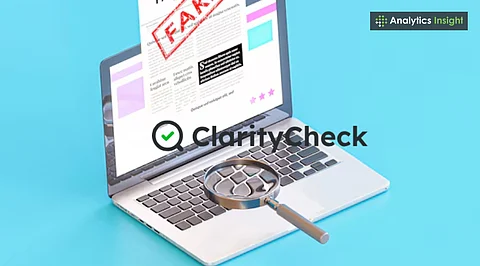

As internet fraud becomes more sophisticated, ClarityCheck has emerged as a default guide for individuals who seek quick, unambiguous answers before communicating with unfamiliar contacts. Most ClarityCheck reviews highlight its quickness, precision, and capacity to transform ambiguous information into useful insights.
The digital economy has amplified both opportunity and risk. A message from an unfamiliar number, an unexpected email with a link, or a social media profile that seems genuine at first glance can be the starting point of a costly mistake. In this climate, claritycheck.com positions itself as a tool for immediate, informed decision-making. By focusing on reverse phone lookups, email searches, and image uploads, ClarityCheck enables users to assess whether to proceed with an interaction, pause for more checks, or walk away entirely.
At the heart of the ClarityCheck service is a simple user flow: enter a phone number, type an email address, or upload an image. Within moments, a structured report is generated, presenting identifiers linked to the query. These can include the historical owner name of a number, its carrier, and whether it’s mobile or VoIP. For emails, results may show public records connections, the domain’s age, related accounts across marketplaces or social platforms, and possible signs of risky usage.
ClarityCheck reviews often note that the layout makes it easy to scan for relevant details. Grouping information into identity signals and activity signals allows users to interpret patterns faster. This clarity is especially important in situations where scammers rely on creating urgency and limiting the time a target has to think.
Scam attempts frequently succeed because they exploit reaction time. A well-timed text about a fake delivery issue or an email claiming to be from a trusted institution can trigger fast, uncritical responses. By running a suspicious number or email through claritycheck.com, users can inject a deliberate pause into the process. Even discovering that a number is newly registered or that an email lacks any established digital footprint can be enough to prompt caution.
The platform’s speed is a central theme in many ClarityCheck reviews. Users describe being able to check multiple leads in minutes, which is critical in environments like online marketplaces or short-lived promotions where scammers thrive. The emphasis is not on replacing formal investigation but on empowering everyday users to take the first, low-friction step toward safety.
ClarityCheck outlines its approach openly on its site, detailing the sources of its data and how it processes user queries. Privacy controls are prominently featured. For example, individuals can request removal of their phone number or email from public search results via an opt-out process described in the terms and help pages. Separate privacy policies for US and EU/UK users explain how cookies, web beacons, and browsing data are handled.
This transparency reinforces user trust, a point that appears repeatedly in ClarityCheck reviews. People value knowing what the service does with their search inputs, and claritycheck.com meets that expectation with documentation that is easy to navigate and free of unnecessary jargon.
One of the service’s most practical contributions is in organizing subtle indicators that, when seen together, can reveal elevated risk. Examples include:
A VoIP number with shifting associated names.
An email address linked to multiple unrelated accounts but no consistent public presence.
A domain that is very recently registered, with minimal infrastructure.
These details, while not definitive on their own, can shape a more informed response. ClarityCheck’s role is to compile these signals into a coherent report so that the user can decide on next steps without sifting through scattered sources.
ClarityCheck’s audience is not limited to those with advanced digital forensics skills. In fact, part of the platform’s appeal is that it delivers professional-style insight in a consumer-friendly format. The reports are designed for clarity over complexity, with fields labeled clearly as exact, approximate, or inferred. If information is unavailable, that is stated outright rather than replaced with guesses.
ClarityCheck reviews consistently highlight how this straightforward approach lowers the barrier to proactive verification. A user doesn’t need to know how to trace an IP address or query a domain registry manually—claritycheck.com handles the technical steps behind the scenes.
The rise of platforms like ClarityCheck reflects a broader cultural shift toward “verify before you trust.” This is not about cultivating paranoia, but about normalizing a habit that once belonged only to risk analysts and investigators. A reverse lookup before replying to a message is becoming as routine as checking a weather app before leaving the house.
The service does not claim to eliminate scams entirely, but by giving users instant access to credible signals, it changes the economics for would-be fraudsters. The more people pause to check, the harder it becomes for scams to scale efficiently.
Feedback from users points to a few priorities for the platform’s continued evolution: expanding the range of signals available in reports, improving the speed of data refresh, and integrating clearer visual cues for high-risk findings. If claritycheck.com maintains its current balance of accuracy, privacy, and usability, it is positioned to remain a staple in personal verification.
In an environment where digital deception is a moving target, tools that promote deliberate decision-making are invaluable. ClarityCheck offers a fast, structured way to verify before you commit, and its growing base of positive ClarityCheck reviews suggests that more people are embracing that habit.
